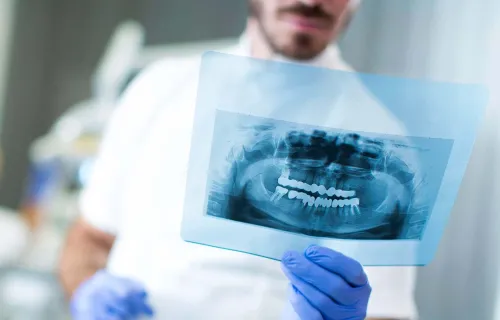Today’s healthcare landscape is driven by digital transformation, cloud migration, and growing pressure to improve interoperability. In this shifting environment, traditional Picture Archiving and Communication Systems (PACS) are increasingly revealing their limitations. While PACS has been a cornerstone of radiology for over 20 years, its tightly coupled architecture is proving insufficiently agile to meet the demands of modern imaging environments.
Enter the vendor-neutral archive (VNA)-centric, deconstructed PACS architecture.
What is a deconstructed PACS?
A deconstructed PACS approach takes the traditional, all-in-one system and breaks it into three modular components: the archive (VNA), the diagnostic viewer, and the workflow engine. The benefit of this format is that each component can be selected, deployed, and maintained independently, giving healthcare organizations more control. By moving away from rigid monolithic systems, this model offers improved flexibility, scalability, and cost-efficiency—key advantages in today’s fast-evolving healthcare landscape. At the heart of this approach lies the VNA, which acts as a centralized hub for all imaging data across the enterprise.
Why extend the VNA into the PACS domain?
Historically, VNAs have played a behind-the-scenes role, acting as long-term storage solutions that support PACS. But in today’s evolving, deconstructed architecture, the VNA is stepping into the spotlight, taking on the role of the primary archive even for radiology. By extending the VNA to handle responsibilities typically managed by PACS, healthcare organizations can overcome many of the limitations of legacy systems and unlock the following strategic benefits.
|
|
Break down PACS silos and eliminate redundant archivesMany hospitals and healthcare networks operate multiple PACS, sometimes one for each hospital or specialty, like radiology, cardiology, or pathology. Each comes with its own archive, infrastructure, and licensing fees. By consolidating these into a single VNA and optionally layering shared PACS capabilities on top, organizations can achieve the following outcomes:
This consolidation helps eliminate the need for each site to run and maintain its own PACS, moving toward a shared service model that is easier to scale and govern centrally. |
|
|
Unlock best-of-breed flexibilityA modular architecture gives healthcare organizations the freedom to select the best diagnostic viewer or workflow solution for each need, without being tied to a single vendor. While an enterprise viewer may work well for most departments, specialties like cardiology or pathology may require more advanced, tailored tools. In those cases, the system can seamlessly launch specialty-specific viewers from within the enterprise viewer, maintaining a smooth workflow while delivering deep specialty capabilities that those departments require. This flexibility also opens the door to innovation, making it easier to explore and adopt emerging solutions, including AI-powered viewers. |
|
|
Future-proof your imaging platformDecoupling the imaging components means upgrades don’t have to be a significant disruption. Organizations can replace or update the diagnostic viewers or workflow components as needed, without migrating the archive. The VNA remains the stable, centralized repository for imaging data. |
|
|
Enable enterprise-wide imagingA VNA can store imaging data from every specialty, not just radiology. It handles digital imaging and communications in medicine (DICOM) images, and, with the help of an IHE cross-enterprise document sharing (XDS) repository, also manages non-DICOM content, such as PDFs, clinical document architecture (CDA), and other clinical documents. Using standards like DICOMweb, XDS, and fast healthcare interoperability resources (FHIR), this approach enables seamless access to images and documents for radiologists, referring physicians, specialists, and patients using a portal. It also supports growing imaging needs in emerging areas like dermatology, wound care, and point-of-care ultrasound, ensuring a comprehensive, enterprise-wide imaging strategy. |
|
|
Accelerate cloud and AI adoptionA cloud-native, SaaS-based VNA, whether deployed on-premises or in the cloud, makes it easy to integrate with AI tools and modernize diagnostic workflows. It supports both AI-assisted and traditional imaging processes, offering the flexibility healthcare organizations need. This infrastructure also lays the groundwork for machine learning pipelines, population health analytics, and multi-site research, whether the data is stored locally or in the cloud. |
Introducing the converged EI-VNA-PACS
A natural evolution of the deconstructed model is the converged enterprise imaging (EI)- VNA-PACS architecture, where a single platform delivers both VNA and PACS capabilities in a unified, cohesive system. This approach combines the flexibility of a modular system with the efficiency and simplicity of an integrated solution, driving down costs and streamlining operations across the enterprise.
Key characteristics of the converged architecture include:
- Employs a single storage layer: VNA (long-term archive) and PACS (diagnostic reading) use the same physical copy of the imaging study, reducing the need to duplicate data or move it between systems.
- Integrates workflow: Reading, archiving, routing, lifecycle management, and reporting are part of one seamless workflow.
- Provides reading capabilities: Includes enterprise PACS features, such as reporting worklists and diagnostic reading.
- Eliminates data movement: Data is available within the same system, eliminating the need to fetch/prefetch foreign exams between a PACS and a VNA.
- Enables shared PACS: A shared PACS platform for multiple hospitals or imaging centers reduces the need for each site to maintain its own PACS infrastructure.
- Offers standardized access: Standardizing access protocols across sites simplifies data sharing and improves hospital collaboration.
Driving long-term cost savings
By eliminating redundant systems and streamlining support, healthcare organizations can achieve substantial long-term savings, cutting costs across infrastructure, licensing, and operational overhead. These benefits include the following:
- Consolidated infrastructure: Replaces multiple legacy PACS instances with a shared EI-VNA-PACS platform
- Reduced licensing and maintenance costs: Limits the number of systems to manage and vendors to pay
- Streamlined support and upgrades: Centralizes upgrades, patches, and vendor management
- Optimized storage: Eliminates the storage of duplicated images across multiple systems
Building a future-ready imaging strategy
Healthcare organizations face mounting pressure to reduce costs, improve interoperability, and modernize their IT infrastructures. A VNA-centric, deconstructed PACS model offers a clear and strategic path forward. By consolidating imaging archives and adopting modular architecture, organizations can streamline operations while positioning themselves for broader data sharing, regionally, nationally, or globally—all with the required security and privacy measures in place.
Whether your goal is to reduce infrastructure complexity, enhance imaging accessibility, or lay the foundation for AI and advanced analytics, the deconstructed VNA model offers a flexible, future-ready solution.
The future of imaging isn’t confined to traditional PACS—it’s built on open, standards-based platforms that can evolve alongside the needs of modern healthcare, helping organizations create a secure, scalable, and future-ready imaging infrastructure built for true interoperability.
If your organization is interested in moving to a deconstructed or converged PACS, let’s connect and explore how to take the first step.





